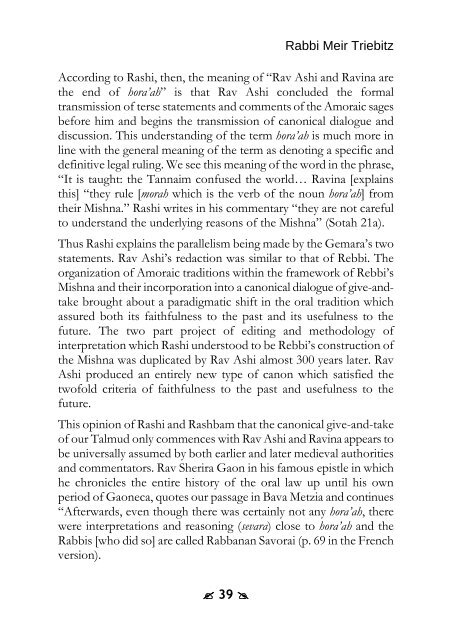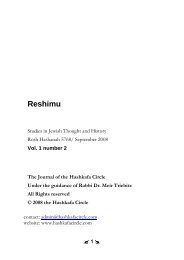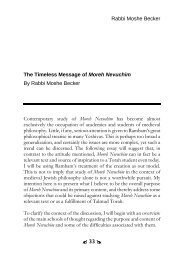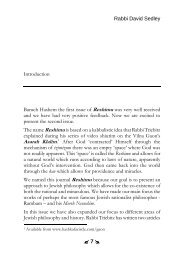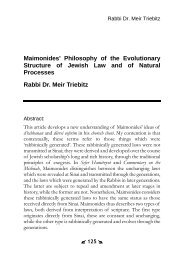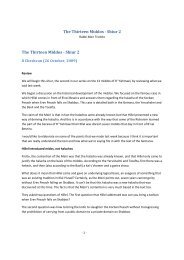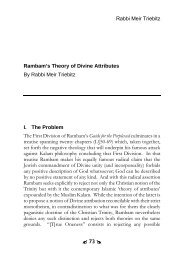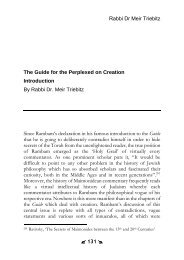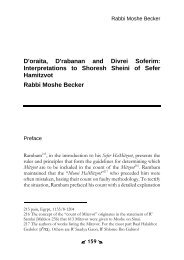Reshimu_3_journal_no.. - Hashkafa Circle
Reshimu_3_journal_no.. - Hashkafa Circle
Reshimu_3_journal_no.. - Hashkafa Circle
Create successful ePaper yourself
Turn your PDF publications into a flip-book with our unique Google optimized e-Paper software.
Rabbi Meir Triebitz<br />
According to Rashi, then, the meaning of “Rav Ashi and Ravina are<br />
the end of hora’ah” is that Rav Ashi concluded the formal<br />
transmission of terse statements and comments of the Amoraic sages<br />
before him and begins the transmission of ca<strong>no</strong>nical dialogue and<br />
discussion. This understanding of the term hora’ah is much more in<br />
line with the general meaning of the term as de<strong>no</strong>ting a specific and<br />
definitive legal ruling. We see this meaning of the word in the phrase,<br />
“It is taught: the Tannaim confused the world… Ravina [explains<br />
this] “they rule [morah which is the verb of the <strong>no</strong>un hora’ah] from<br />
their Mishna.” Rashi writes in his commentary “they are <strong>no</strong>t careful<br />
to understand the underlying reasons of the Mishna” (Sotah 21a).<br />
Thus Rashi explains the parallelism being made by the Gemara’s two<br />
statements. Rav Ashi’s redaction was similar to that of Rebbi. The<br />
organization of Amoraic traditions within the framework of Rebbi’s<br />
Mishna and their incorporation into a ca<strong>no</strong>nical dialogue of give-andtake<br />
brought about a paradigmatic shift in the oral tradition which<br />
assured both its faithfulness to the past and its usefulness to the<br />
future. The two part project of editing and methodology of<br />
interpretation which Rashi understood to be Rebbi’s construction of<br />
the Mishna was duplicated by Rav Ashi almost 300 years later. Rav<br />
Ashi produced an entirely new type of ca<strong>no</strong>n which satisfied the<br />
twofold criteria of faithfulness to the past and usefulness to the<br />
future.<br />
This opinion of Rashi and Rashbam that the ca<strong>no</strong>nical give-and-take<br />
of our Talmud only commences with Rav Ashi and Ravina appears to<br />
be universally assumed by both earlier and later medieval authorities<br />
and commentators. Rav Sherira Gaon in his famous epistle in which<br />
he chronicles the entire history of the oral law up until his own<br />
period of Gaoneca, quotes our passage in Bava Metzia and continues<br />
“Afterwards, even though there was certainly <strong>no</strong>t any hora’ah, there<br />
were interpretations and reasoning (sevara) close to hora’ah and the<br />
Rabbis [who did so] are called Rabbanan Savorai (p. 69 in the French<br />
version).<br />
39


